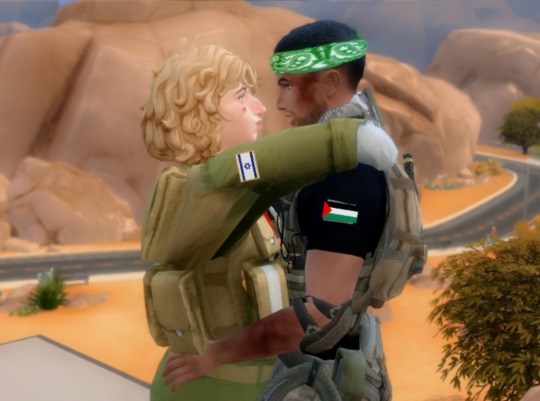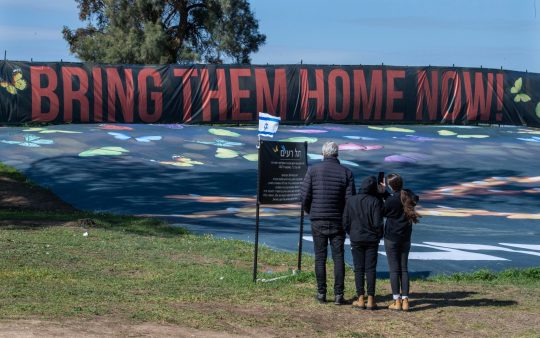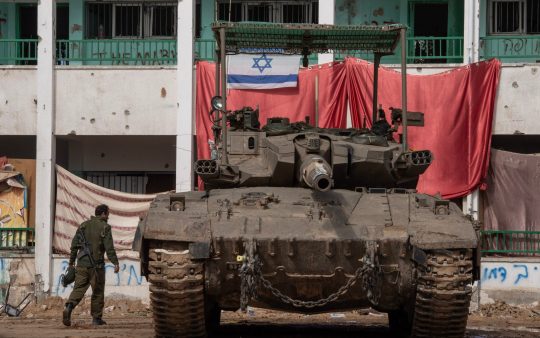#israel defense forces
Text

"Fuck the Imperialist Death Factory! (IDF)" (EN: English)
#free palestine#freepalastine🇵🇸#palestine#israel#israhell#fuck the idf#idf terrorists#idf#israel defense forces#free gaza#gaza strip#gaza genocide#gazaunderattack#gaza#genocide#no pride in genocide#benjamin netanyahu#fuck netanyahu#netanyahu a criminal of war#bibi netanyahu#anti netanyahu#ausgov#politas#auspol#tasgov#taspol#australia#fuck neoliberals#neoliberal capitalism#anthony albanese
240 notes
·
View notes
Text

Amen 🙏❤🇮🇱
234 notes
·
View notes
Text
no matter what, help to the people of gaza should always be supported, however seeing japan speak against israel as if they aren’t the modern-day version of the imperial japanese army makes me absolutely lose my mind
#easy to move on when you refuse to acknowledge the past#japan#imperial japan#israel#idf#israel defense forces#free palestine#free gaza#free west bank#palestine#gaza#west bank#from the river to the sea palestine will be free
83 notes
·
View notes
Text
By EMANUEL FABIAN
The Israel Defense Forces says troops operating in the northern Gaza Strip have located dozens of rockets hidden under boxes with UNRWA markings in a residential home, and other weaponry belonging to Hamas.
Troops of the 7007th Reserve Battalion were searching a home in a neighborhood when they found a room full of boxes bearing the logo of the UN agency that supports Palestinian refugees.
Underneath the boxes, dozens of rockets, mortars and other explosives were found, the IDF says.
Separately, troops of the 414th combat intelligence collection unit operating in a home in northern Gaza found grenades, weapon parts and other military equipment inside a child’s bedroom, the IDF says.
133 notes
·
View notes
Text


159 notes
·
View notes
Text
#palestine#free palestine#Israel#israeli occupation#free gaza#Gaza#gaza strip#apartheid#palestinians#genocide#ethnic cleansing#occupied palestine#occupied west bank#occupied territories#war crimes#israeli settlers#israel defense forces#idf#terror#terrorism#power#money#reality#current events#world news#ceasefire#ceasefire now#end the genocide#end the occupation#end the apartheid
28 notes
·
View notes
Text
#free palestine#ceasefire in gaza#free gaza#israel is committing genocide#israel is an apartheid state#israel defense forces#fuck the idf#fuck the israeli government#all eyes on gaza#all eyes on palestine#all eyes on rafah#hands off palestine#hands off gaza#hands off rafah#free rafah#palestine#gaza#rafah
16 notes
·
View notes
Text
by ILAN HULKOWER
The Israel Defense Forces (IDF) announced Tuesday that it has concluded its operations in a residential complex after eliminating over 100 Hamas fighters there, The Times of Israel reported.
The IDF’s raid into the multistory Hamad residential complex in southern Khan Yunis started “earlier this month” and was carried out by Israeli commando units, tweeted Emanuel Fabian, a military correspondent for The Times of Israel. (RELATED: High Ranking Hamas Official Killed, White House Says: REPORT)
“In one building, used by the deputy commander of a Hamas battalion in Khan Younis, the IDF says the troops captured a cache of weapons. More than 100 gunmen were killed in the operation, and buildings used by Hamas, including some that were booby-trapped, were destroyed, according to the IDF,” Fabian wrote.
Fabian also attached a photo of military equipment the IDF found at the complex, as well as a video of the operation.
Joe Truzman, a senior analyst at the Foundation for Defense of Democracies, tweeted out an English subtitled version of that video.
The video depicted IDF infantry and tanks operating in an urban environment as soldiers moved door-to-door.
10 notes
·
View notes
Text

24 notes
·
View notes
Text
Politics and Human Rights symbols: IOF/IDF and Fuck the IOF/IDF




[ ID: Four emojis of a soldier with a helmet, shirt and vest, all in green tones. First is plain. Second has Israel flag next to them. Third is same as first but with red cancel symbol over it. Fourth is the same as second but with red cancel symbol over it. /End ID ]
emoji/aac symbol for Israeli Defense Forces (IDF)/Israeli Occupation Forces (IOF) and the phrase "Fuck the IDF/IOF". added flag to look different. will make version with middle finger too later.
#kit.makes#idf#israel defense forces#iof#israel occupation forces#fuck the idf#fuck the iof#army#soldier#palestine#free palestine#swearing tw#swearing#phrases#politics#human rights#aac symbol#emojis#emoji
11 notes
·
View notes
Text
Can anyone reblog this with all IDF members and Israeli government workers social media accounts that you know ?
It will be good if we can destroy their mindset along with their brainwashed playing victim mentality until they don't want to fight anymore and nobody wants to join IDF and government anymore.
Basically it isn't much of noble goal or such, we simply tell that joining IDF and israel govt is awful and it means being war criminal.
Besides the name data can be collected to be used to forbid any of them entering and stealing countries anymore.
#military#IDF#israel defense forces#israel#anti zionism#anti israel#palestine#from river to sea palestine will be free#gaza#social media#facebook#twitter#tumblr
19 notes
·
View notes
Text


Make love, not war
#sims 4#ts4 cc#sims 4 cc#sims 4 gameplay#sims 4 screenshots#sims 4 poses#sims 4 military#ts4 military#middle east#israel#palestine#israel defense forces#israel hamas war#hamas#free palestine#stop israel#stop war#free gaza#israel is a terrorist state#from the river to the sea palestine will be free#israeli girls#arab men#make love not war#interracial love#interfaithxxx#interfaith peacebuilding
24 notes
·
View notes
Text

#israel#jerusalem#idf#israel defense forces#am yisrael chai#israel news#never again#antisemitism#shoah
226 notes
·
View notes
Text
By: Robert Mendick
Published: Jan 27, 2024
Less than a mile away from where we are standing, the constant rattle of gunfire is broken only by the occasional bone-shaking explosion. Here in an outer neighbourhood of Khan Younis, the Gazan city that has been gripped by the bloodiest street battles of this bloodiest of conflicts, the devastation of war is obvious.
The ground has been flattened, except for huge piles of rubble where grand villas, owned by the Palestinian elite, have been demolished. A combination of Israeli bulldozers and explosives has laid waste to Khan Younis’s fanciest suburb.
This is the buffer zone that Israel is now creating to protect neighbouring communities from any future incursion.
But it’s under the ground that’s the problem for Israel’s troops. “It’s no longer 180-degree fighting,” says one of the soldiers with the 55th Paratroopers Brigade, part of the 98th airborne division.
The soldier motions in front of him, showing how a normal battle would be conducted with comrades behind and the enemy in front in a semi-circular arc. The war in Gaza, sparked by the Oct 7 massacre of civilians on Israeli kibbutzes and at a music festival, is different.
“It’s not even 360 degrees,” says the paratrooper, referring to what might be expected in close combat urban fighting. “This is 720 degrees.”
The soldier looks down into the dirt. The Hamas terrorists are beneath his feet. Catching and killing them is not proving easy. Yahya Sinwar, the Hamas leader and mastermind of the October 7 attacks, remains at large. “When we see him, we will kill him,” says a senior commander.
Beneath us are, according to the Israeli colonel accompanying us, 160 miles of tunnels radiating out from Khan Younis. The scale is staggering. Gaza itself is only 25 miles long and barely seven miles wide.
On Friday morning, a Telegraph reporter and photographer were escorted into a suburb of Gaza’s southernmost city by the Israel Defense Forces (IDF) largely to give a better understanding of how the war is being waged.
The tunnels explain Israel’s slow progress. It’s been almost four months since the massacre in which 1,200 people were killed and more than 240 people taken hostage. By Israel’s standards, this is an already overlong war. Since the start of the conflict, more than 200 IDF soldiers have died, including 24 last week on the deadliest day of the campaign for the Israeli military.

[ Israeli soldiers survey the flattened terrain of Khan Younis, punctuated only by the rubble of once opulent villas. ]
Lt Col Anshi (The Telegraph has agreed not to give his full name) stands over a tunnel he is showing us, terrifyingly close to the border fence with Israel. We are able to scramble down a 20ft drop, dug out by Israeli bulldozers, that exposes the tunnel that plummets steeply into the ground a further 80ft.
The tunnel, less than three feet wide, was used by Hamas to infiltrate Israel on Oct 7. Its entrance, hidden by the dirt at the surface, was less than 100 yards from the fencing that terrorists cut through before launching an attack on Kibbutz Ein Hashlosha, where four residents were murdered and multiple hostages taken.
From the tunnel, we can clearly see the breaches in the fence. It’s a chilling reminder of what happened back in October.
The day before The Telegraph arrived, the IDF blew up the tunnel but there remained such nervousness that before we could inspect it, two soldiers slid down to its entrance with their guns ready and aimed into its black hole.
They shone torches in before waving us to inspect what was left. The tunnel is tiny, designed only to be used to attack Israel, its entrance close to the fence and able to fit through one fighter at a time. Its total length is unclear but it runs under agricultural fields for what must be a mile.
“We have blown up hundreds of tunnel shafts,” says Lt Col Anshi, a 46-year-old reservist who has had to temporarily abandon his IT job and his family, spending the past 50 days and counting in Gaza. He had a week off to recuperate only after being shot through the arm (“I was lucky,” he says. “The bullet came in and came out.”)

[ Soldiers on patrol in Khan Younis, where they are painstakingly tearing apart the tunnel structure used to attack Israel on Oct 7. ]
He likens the tunnels to the London Underground, many of them interconnected but also serving different purposes. “I cannot go into details but today we feel we have a very good solution for the tunnels,” he says.
Incrementally, the IDF has been able to map them out. “Every second or third building has an entrance shaft. It can be in the courtyard or inside the building itself. The network is so extensive. Each tunnel is marked with an icon. They [the marks] are usually by the entrance shaft,” says Lt Col Anshi.
In the street battles in Khan Younis, Hamas fighters can suddenly appear from nowhere. “They jump out with an RPG [rocket-propelled grenade]. We are not fighting an organised conventional army but small squads of four to six fighters. Our main challenge is to shoot them in the few seconds when they are popping out of the hole,” says Lt Col Anshi.
It’s like the fairground game of whack-a-mole, but with dire consequences for the loser. “There is no army vs army like in the old days. It is two terrorists coming out of a hole shooting and we are firing back.”
As we stand discussing the progress of the war, the gunfire coming from the city intensifies. From time to time – every 10 minutes or maybe less – a huge explosion rings out and accompanying smoke, black or dark grey billows into the sky.
The areas we are being shown are safe - the IDF has controlled this territory for about a month - but the fighting feels very close by and certainly intense. Helicopters fire missiles from overhead at distant, unseen targets. The Hamas-controlled Gazan Health Ministry estimates at least 25,000 people have been killed and a horrifying number of them are women and children. How many of the dead are Hamas terrorists is unclear.
‘There is no Iwo Jima here’
I ask Lt Col Ansi what winning looks like as we survey the rubble and the mayhem, the loud bangs and the gunfire making conversation not always easy. He pauses and looks at me. “That’s a good question,” he says. He pauses again.
“It [winning] is accumulative. There is no Iwo Jima and a flag goes up,” he explains, in reference to the famous photograph of American troops victorious on the Japanese island in the Second World War.
“This infrastructure of tunnels has been built over the course of a decade. This,” he says pointing at the tunnel below us, “is one of thousands and thousands. Every 24 hours we uncover another 50, 60, 70 shafts and blow up two tunnels. You do the maths. It will take time but we have a solution. We go shaft by shaft, tunnel by tunnel.”

[ A memorial at the festival site of the Supernova Sukkot gathering. ]
The Khan Younis tunnels appear more extensive than elsewhere in Gaza. It’s estimated the network stretches for 160 miles in and around the city.
The tunnels are often connected, but Israel has discovered that they have different purposes. Some, like the one we are staring at, are designed only to attack. Others are for smuggling goods into Gaza and some are described as “VIP tunnels”, available for the Hamas leadership to stay below ground, avoiding assassination attempts and linking grand villas to Hamas offices.
Those tunnels are, says Lt Col Ansi, offering a glimpse into how the Strip was run, lined with marble. “Our main goal is to destroy the system. We are not going to get to every Hamas militant although we are trying. But we are dismantling Hamas as an organisation. That is the main goal,” he said.
From the tunnel, we are taken in a soft-topped ‘Hummer’’ along a dirt road built by the IDF that runs into Khan Younis. The road weaves its way through a wasteland that was once home to the Strip’s wealthier residents. Their villas are destroyed.

[ An Israeli Merkava tank in front of a school the soldiers say had been used as a base by Hamas in Khan Younis. ]
A quick calculation suggests maybe one in 20 has been left standing but it’s impossible to be precise. The vehicle travels swiftly along the bumpy road and it’s hard to know where a villa might once have stood. The homes that were destroyed contained tunnel shafts, many of them booby-trapped, which Israel says show a link to the Hamas terror network. They are claims that are impossible to verify.
“We have controlled this neighbourhood for more than a month,” explains Lt Col Ansi. The route is used to maintain logistics to back up IDF forces fighting in Khan Younis, but the colonel adds: “The front line is everywhere. Active battles are about a mile from where we are. It is door-to-door. It is difficult.”
Maj Sharon, another officer accompanying The Telegraph journalists, surveys the carnage of the flattened villas. He has little sympathy.
“They had some really nice places. But that’s from corruption. They get support [aid] money stolen by Hamas. The money goes to a select few people close to the leadership. It’s UN money, it’s Qatari money.”
Down the road from the tunnel, maybe half a mile, we reach a primary school that is still standing, about the only building in the neighbourhood that is, but has clearly seen a lot of action. It has become a base for the IDF, with two Merkava tanks stationed in front along with assorted armoured support vehicles.
The walls are pock-marked with bullet holes but incongruously cartoons of children that decorate the building have survived the fierce fighting. Balls of razor wire guard the entrance and metal boxes that contained Israeli ammunition litter the ground.
Lt Col Anshi suffered his injury in a firefight at another school closer to Khan Younis. This school was captured on December 5 and Israeli flags now hang from the building.
“This is a school that unfortunately was used for terrorist purposes,” says Lt Col Anshi. “We had skirmishes here and another battle further down the road.” He says a shaft to a tunnel was found in the school’s courtyard.
As he talks, the gunfire appears to get closer followed by a huge explosion that makes me jump. The colonel doesn’t flinch and nor do his men. They are used to it. It is the sound of the IDF blowing up another Gazan building. The thick grey smoke and ash come floating in our direction, making it briefly hard to see.
‘If we don’t win, the world will suffer’
Another commander, Maj Ishai, pulls me back as our Hummer is about to leave the area. We have been in Khan Younis for a couple of hours and the IDF is getting twitchy. But the major wants me to know of their determination to finish the fight that Hamas had started.
“We need to find our brothers here,” he says, a reference to the 130 or so hostages who remain unaccounted for. Many are almost certainly already dead. “And we need to make sure it doesn’t happen again. I cannot go home without my brothers and leave them to suffer.”
The major also has a message for the rest of the watching world. “We believe our fight is a fight for all the world. If we don’t win here against the Islamists, then all the world will suffer.”
I shake his hand and climb into the Hummer, leaving him to return to his comrades and the dust and the rubble and the gunfire and the explosions.
#israel#iDF#israel defense forces#hamas#hamas terrorism#hamas terrorists#Khan Younis#exterminate hamas#October 7#hamas massacre#oct 7#israel hamas war#islam#islamic terrorism#religion is a mental illness
12 notes
·
View notes
Text
The Israel Defense Forces recently destroyed the largest tunnel discovered in northern Gaza since the start of the war against the Hamas terrorist group nearly five months ago, the army said on Tuesday.
Stretching some 4 kilometers (2.5 miles), the tunnel approached the Erez crossing to Beit Hanun in Gaza, while never crossing into Israeli territory, with the nearest shaft located 400 meters (about 440 yards) from Erez. The Erez crossing is the sole pedestrian crossing between Gaza and Israel and before the Oct. 7 massacre was used to transfer Gaza patients to Israeli hospitals and by Palestinians with Israeli work permits.
First discovered on Dec. 16, the IDF has been studying and dismantling the tunnel, which had several branches and a maximum depth of 50 meters (165 feet).
The tunnel was big enough to allow for vehicular movements. The route included infrastructure for sewage, electricity and communication and secured top doors designed to prevent the IDF from entering.
Many Hamas weapons were found within the tunnel system.
The tunnel was destroyed in a joint operation involving the engineering unit of the IDF’s Gaza Division, the Engineering Corps’ Yahalom special operations unit, the IDF Southern Command and the Defense Ministry’s engineering and construction division.
Footage from the IDF’s activity to neutralize the tunnel appears to show a green-painted Nazi swastika, underscoring the violent antisemitic ideology of Hamas.
“The highest-ranking members of the terrorist organization were directly involved in building this tunnel, including [Hamas chief in Gaza] Yaha Sinwar and [his brother] Mohammed Sinwar, who worked on the planning, construction and budgeting, all of which drew many resources from the people of Gaza for the benefit of terrorist infrastructure instead of civilian infrastructure,” said the commander of the underground warfare unit, described as “Maj. Y.” by the IDF to conceal his identity.
It was reported in late January that the IDF has damaged or rendered inoperable 20% to 40% of Hamas’s expansive tunnel infrastructure in the Gaza Strip.
Israel believes the Islamist group built between 350 and 450 miles of subterranean terror infrastructure, with upwards of 5,700 entry shafts.
31 notes
·
View notes
Text
Keep mocking Israel, y'all! They're losing the propaganda war.

#palestine#israel#twitter#instagram#i stand with palestine#israel defense forces#israeli apartheid#gaza#jerusalem#west bank
11 notes
·
View notes